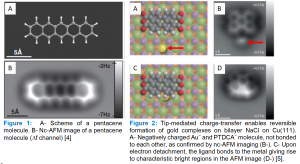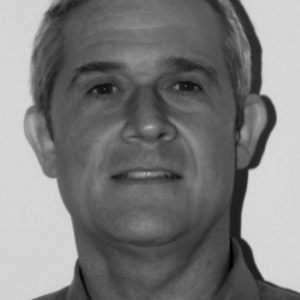LECTURER @AMU
Non-contact atomic force microscopy in ultra-high vacuum : concepts & recent trends
Since the mid 80’s, scanning probe microscopy has brought us experimental access to the world of surface physics down to the atomic scale. The atomic force microscope (AFM, 1986 [1]), offspring of the scanning tunneling microscope (STM, 1982 [2]), has rapidly found wider applications than the STM because it allows to image any sample without requiring electrical conduction. However, the spatial resolution of AFM initially was inferior to the one of the STM. In the 90’s, frequency modulation-AFM, (or non-contact AFM, nc-AFM [3]), was developed with the goal to extend the imaging capabilities of AFM to ultra-high vacuum conditions, wherein the control of the quality of the surface is easier than in ambient conditions. Since 2009 and the mastering of the tip functionalization with a single CO molecule [4], the resolution achieved in nc-AFM has been boosted far beyond STM, e.g. when imaging individual organic molecules and revealing electron clouds within single atoms. Nowadays, height resolution reaches sub-picometer values, and forces beyond piconewtons can be measured. The origin of the forces covers chemical bonding forces and Pauli repulsion forces, that can be explored in details by the technic. Nc-AFM is as well used to manipulate atoms, molecules and charges [5] to trigger and follow original chemical reactions. This lecture will introduce the theoretical and experimental concepts of nc-AFM and will highlight a few of the most prominent works published by the community over the past 10 years.
References : [1]- G. Binnig et al., Applied Physics Letters 40, p178 (1982); [2]- G. Binnig et al. Physical Review Letters 56, p930 (1986); [3]- T.R. Albrecht et al. J. Appl. Phys. 69, p668 (1991) ; [4]- L. Gross et al., Science 325, p1110 (2009) ; [5]- F. Mohn et al. Phys. Rev. Lett. 105, p266102 (2010).



